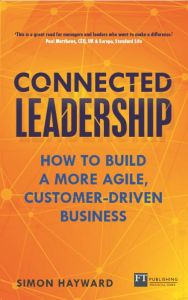Join getAbstract to access the summary!

Join getAbstract to access the summary!
Simon Hayward
Connected Leadership
How to Build a More Agile, Customer-Driven Business
FT Press, 2016
What's inside?
Simon Hayward explains the five factors that form “connected leadership.”
Recommendation
Modern leaders interact with their employees, customers and other stakeholders to fuel profit, growth and loyalty and to exercise influential leadership. Often they communicate by connecting through various social media and Internet tools. Drawing from research with leaders worldwide, consultant Simon Hayward explains how to achieve connectivity and exercise the leadership it requires by following a five-part framework: “purpose and direction, authenticity, devolved decision making, collaborative achievement” and “agility.” This organized strategy is designed to help leaders function effectively in today’s volatile, uncertain, complex and ambiguous (VUCA) world. getAbstract recommends Hayward’s manual and his concept that “connected leadership” fosters connected organizations.
Summary
About the Author
Simon Hayward, who holds a doctorate in Business Administration, is the founder and CEO of Cirrus, a leadership consultancy.
















Comment on this summary